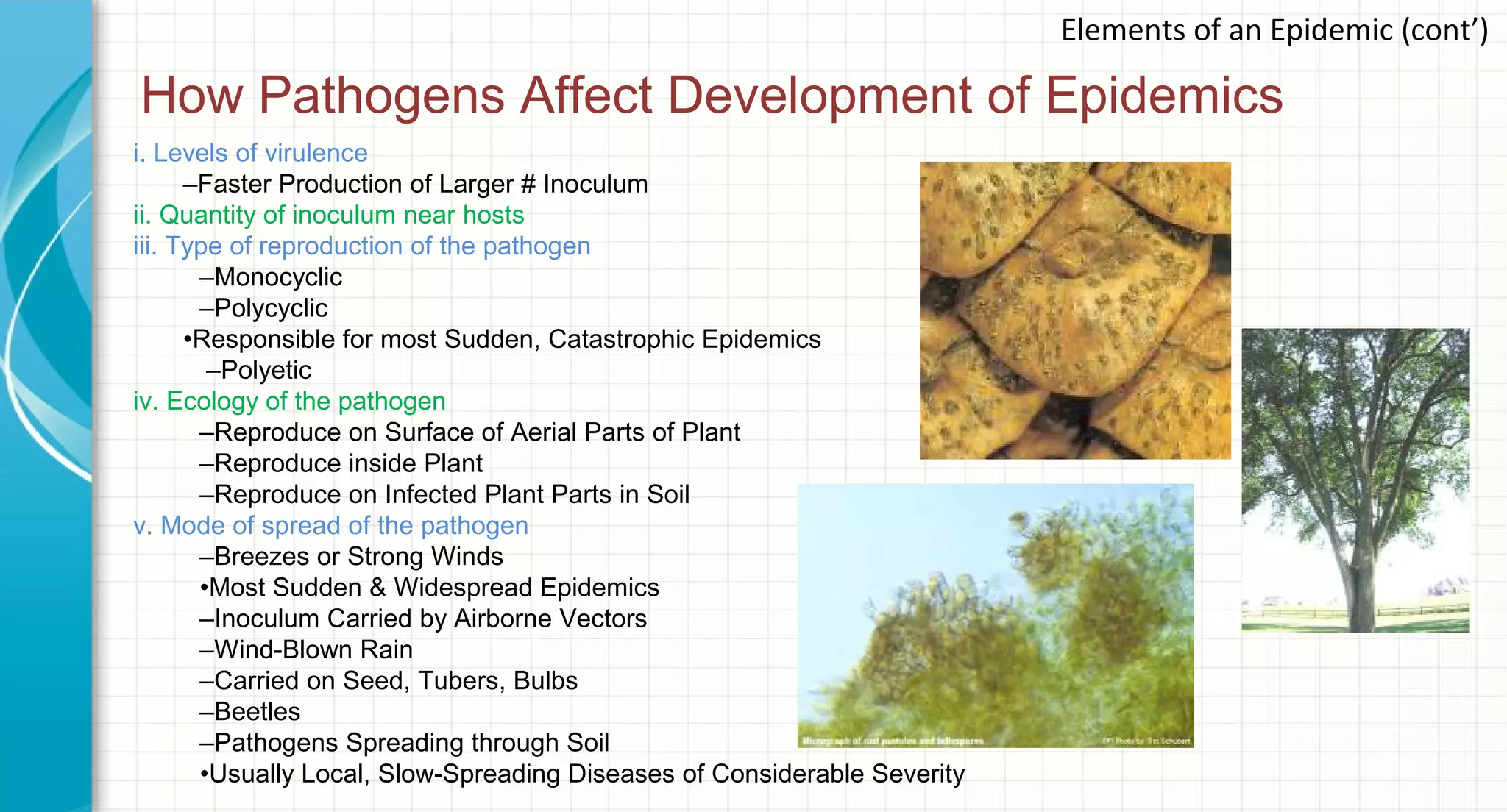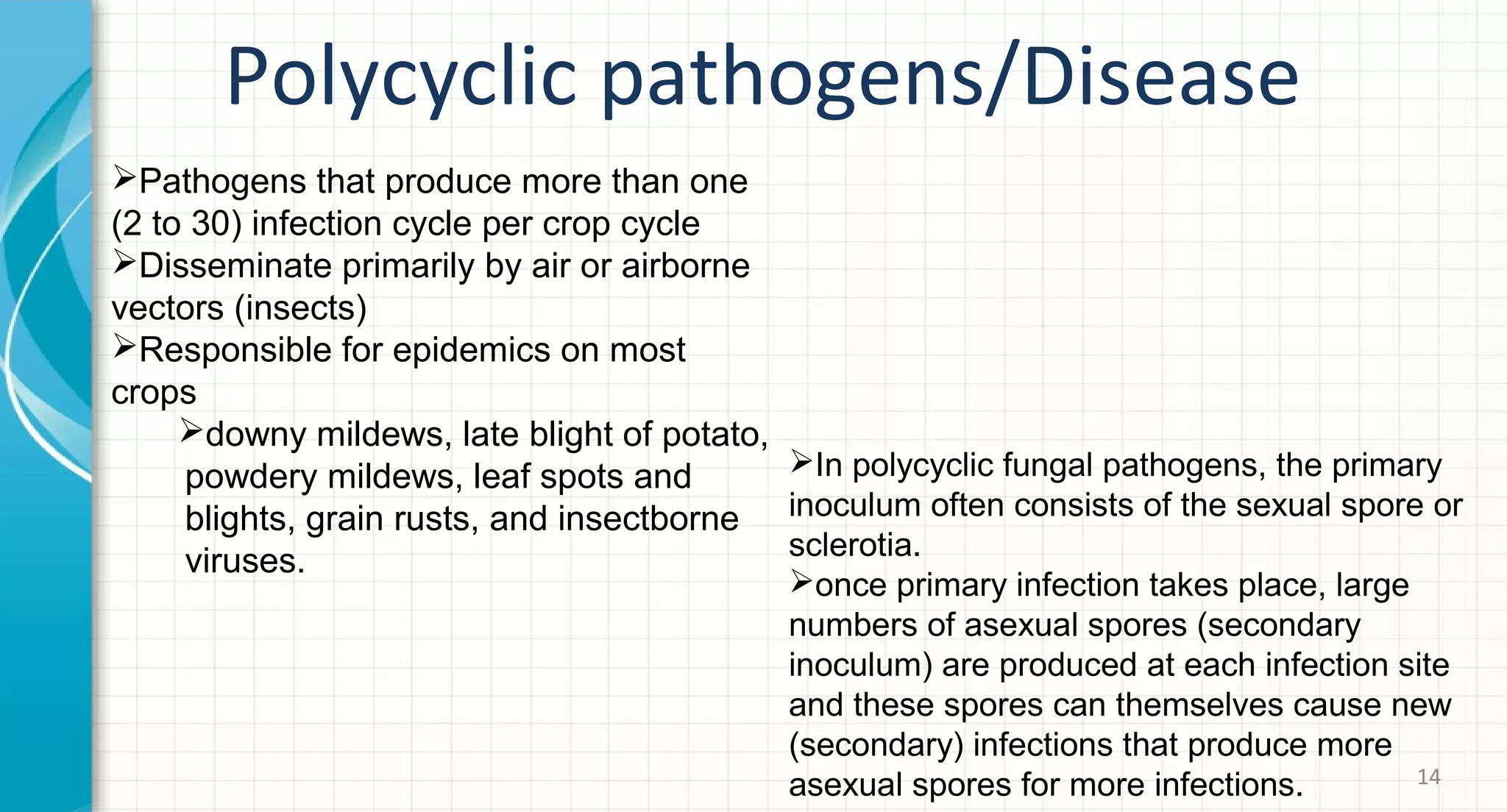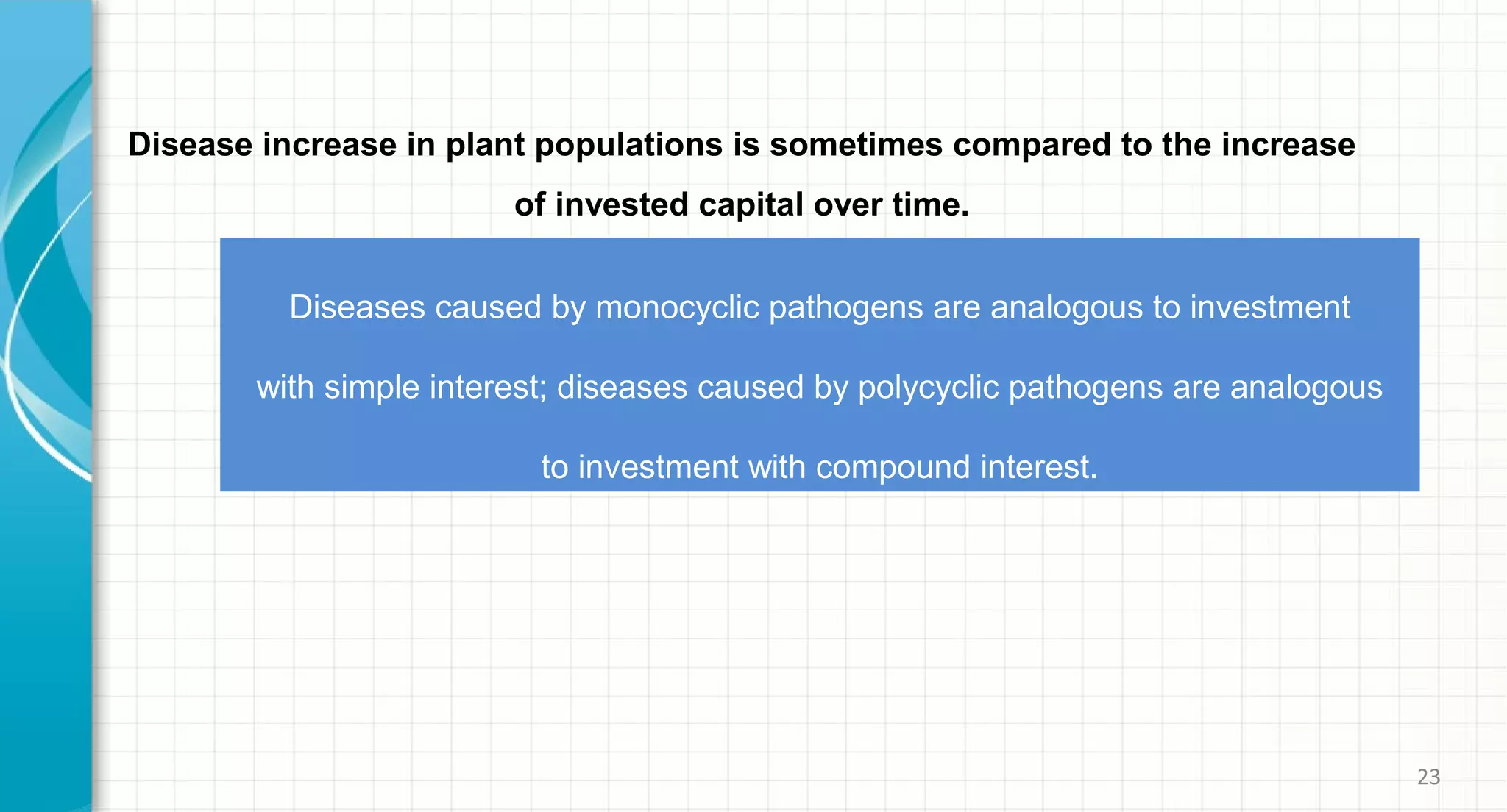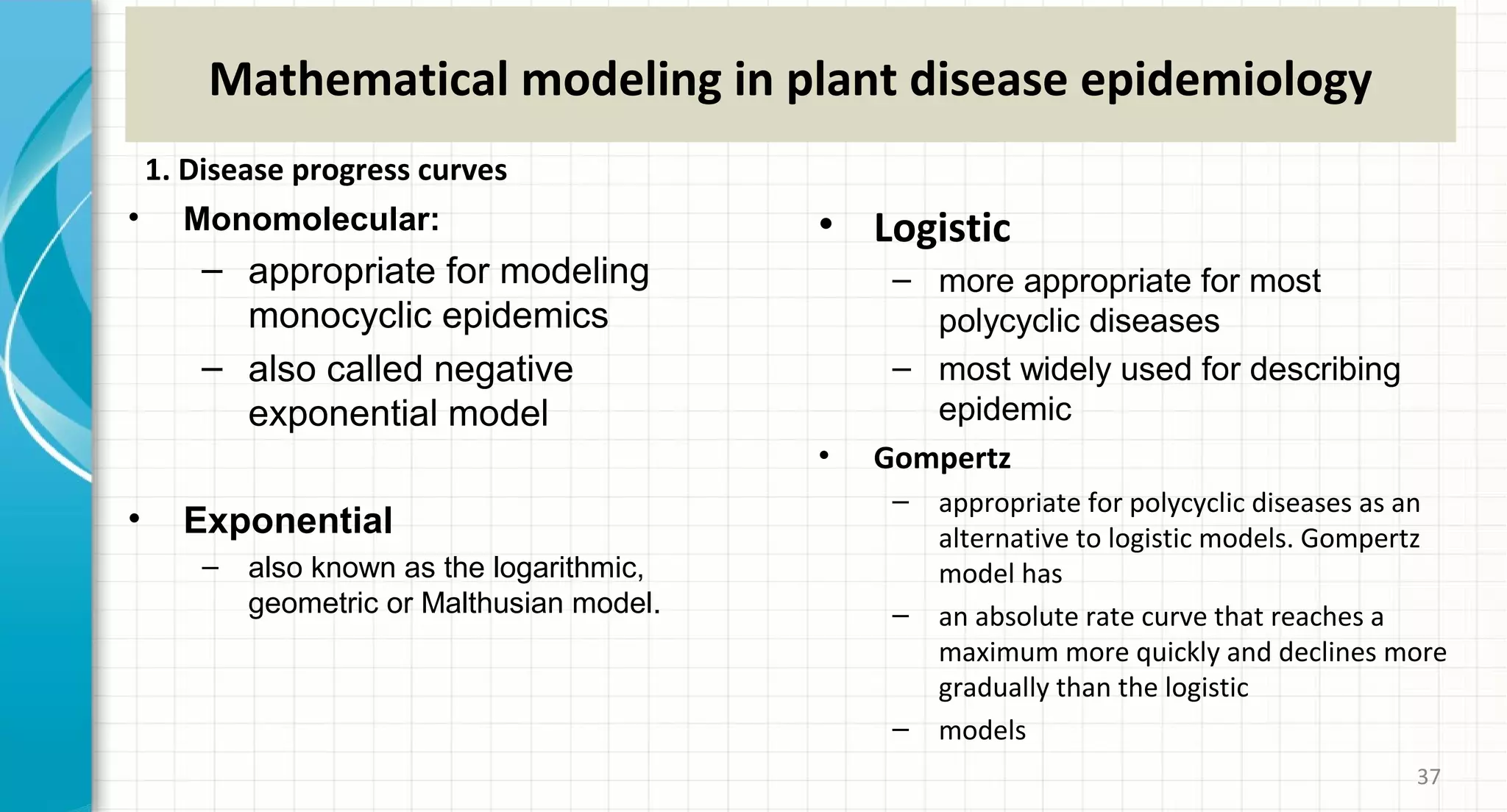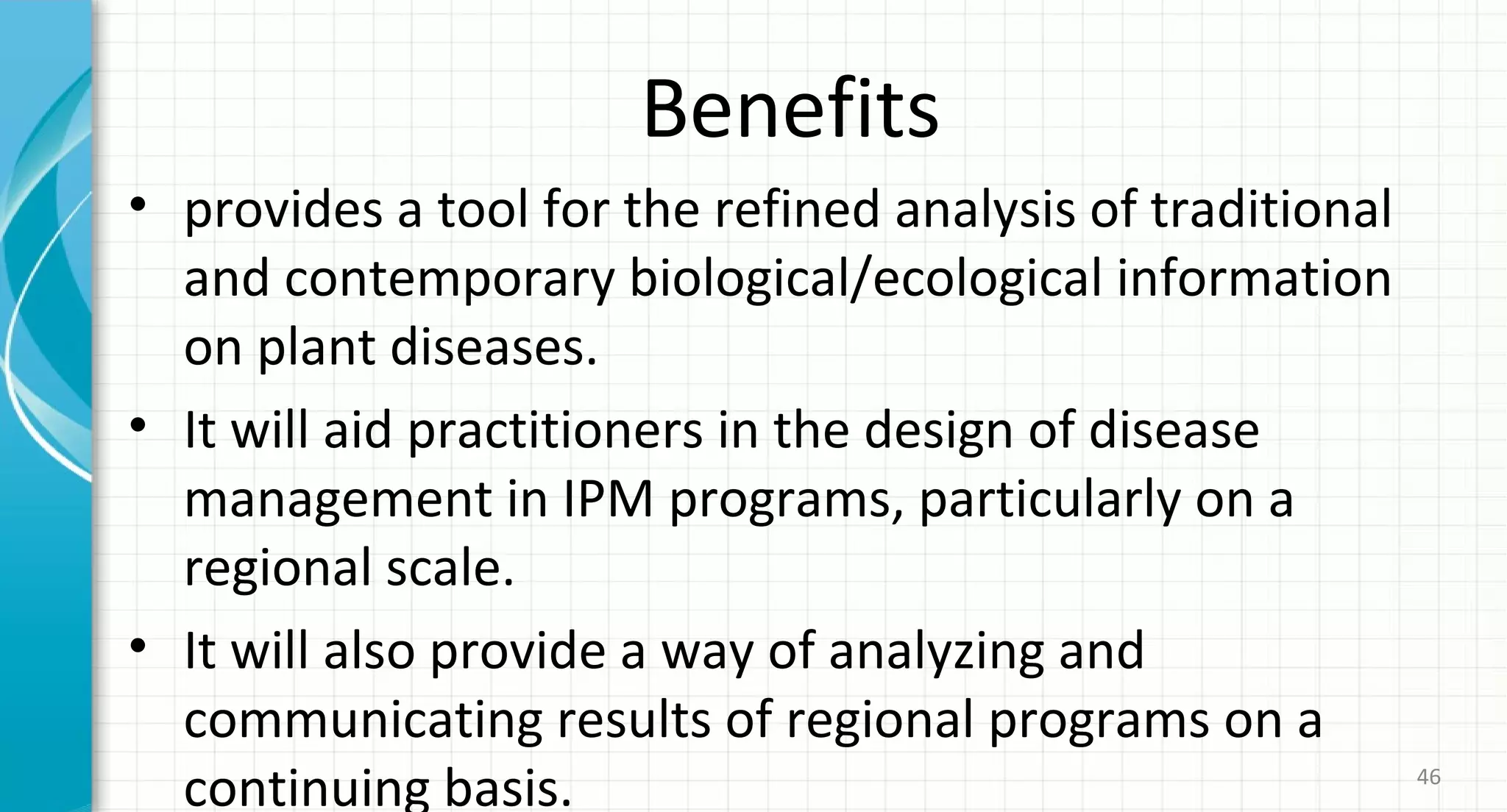This document provides an introduction to the course PPATH 503: Epidemiology and Forecasting of plant disease. It defines key epidemiological concepts such as epidemic, epidemiology, monocyclic and polycyclic pathogens. It discusses how host, pathogen and environmental factors influence disease development. It also examines the history of epidemiology from ancient times to modern developments. Disease progress curves and mathematical modeling of epidemics are introduced.








